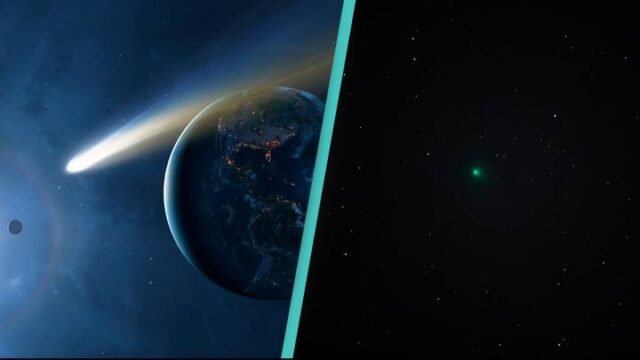
A celestial spectacle is gracing our skies this week as a newly discovered green comet makes its closest approach to Earth. Astronomers and stargazers alike are excited to catch a glimpse of this rare cosmic visitor, which has been named C/2023 G2 (Green Comet). In this article, we’ll provide you with all the essential details about this mesmerizing event, from its discovery to the best times and locations to observe it.
Discovery and Characteristics
- C/2023 G2, dubbed the “Green Comet,” was first detected by astronomers using advanced telescopes on July 31, 2023.
- The green hue of the comet is caused by diatomic carbon (C2) molecules fluorescing in the sunlight, creating a stunning emerald glow.
- It is estimated that the comet is about 2.4 miles (4 kilometers) in diameter, making it a substantial celestial object.
Closest Approach
- The Green Comet is currently making its closest approach to Earth, coming within approximately 60 million miles (97 million kilometers) of our planet.
- This proximity allows skywatchers in both the Northern and Southern Hemispheres to witness its brilliance.
- The best time to view the comet is during the pre-dawn hours when the skies are darkest.
Visibility and Location
- To observe the Green Comet, you’ll need binoculars or a small telescope for the best viewing experience.
- Find a location away from light pollution, such as a rural area or a high vantage point.
- Look towards the east-northeastern horizon in the early morning hours.
Safety Tips
- When observing celestial objects, remember to protect your eyes by using proper eye protection, such as eclipse glasses or specially designed solar filters for telescopes.
- Be patient, as it may take some time for your eyes to adjust to the darkness.
Comet’s Path
- The Green Comet is on a trajectory that will eventually take it back to the outer reaches of our solar system, where it will disappear from view.
- This rare encounter with a green-hued comet is a once-in-a-lifetime event for many skywatchers.
Conclusion
C/2023 G2, the Green Comet, is giving us a remarkable opportunity to witness the beauty of the cosmos up close. Its striking green color and proximity to Earth make it a must-see for astronomy enthusiasts and curious onlookers alike. So, grab your binoculars or telescope, head to a dark location, and prepare to be dazzled by this celestial wonder.
Important Information (Bullet Points)
- Comet C/2023 G2, known as the Green Comet, discovered on July 31, 2023.
- Green color due to fluorescing diatomic carbon (C2) molecules.
- Approximate size: 2.4 miles (4 kilometers) in diameter.
- Closest approach to Earth: 60 million miles (97 million kilometers).
- Best viewing time: Pre-dawn hours.
- Use binoculars or a small telescope.
- Find a dark, low-light pollution location.
- Protect your eyes with proper eye protection.
- The comet’s trajectory will take it back to the outer solar system, disappearing from view.








